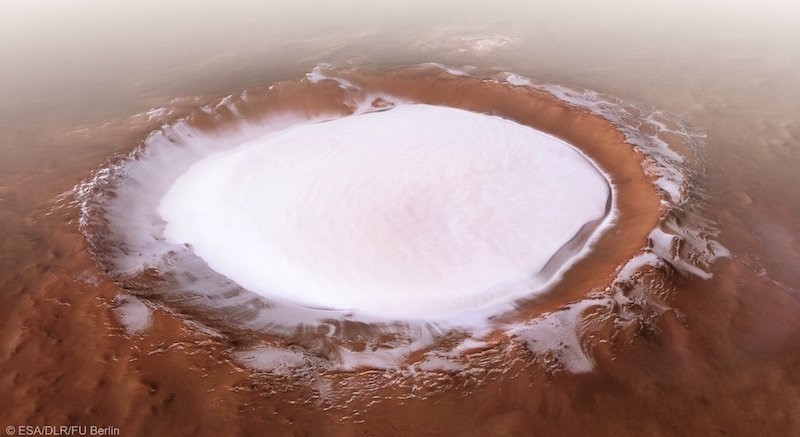
The possible finding implies that Mars may have supported life at one point and had a completely different appearance from what it does now. The Mars Express spacecraft, which is operated by scientists in Europe, may have discovered enormous frozen water deposits beneath the planet’s surface.
The deposits are thought to be around 3.7 kilometers thick, which means that if they melted, they could fill the Red Sea on Earth or cover the whole planet with a two-meter-deep layer of water.
Scientists believe that Mars formerly had glaciers, lakes, and river channels, a significantly different appearance than it does now, based on the new findings.
Evidence of glaciers has been observed, including some that are dust-covered and others that are extinct and no longer exist. According to Colin Wilson, an ESA project scientist, “the majority of the water ice that we have observed on Mars today is found at higher latitudes, where the temperatures are colder and the ice can be stable.”
The fact that mounds of water ice several kilometers thick have accumulated shows how much water there once was on Mars. That is a really large volume of water. Thus, there is evidence of abundant water on the Martian surface in other locations,” Wilson continued.
In 2004, the Mars Express orbiter of ESA provided the first confirmation of ice’s existence on the Red Planet.
When the deposits were found in 2007, it was unclear what kind of material they were composed of—perhaps enormous clumps of silt, volcanic ash, or dust.
NASA stated in 2015 that streams of salted water appeared to be running on Mars.
We’re revolutionizing our knowledge of this planet today. “Our rovers are discovering a lot more humidity in the air than we ever thought,” NASA’s Director of Planetary Science Jim Green stated during a press briefing.
Fifteen years later, fresh data from Mars Express indicates that the deposits may actually be layers of ice and dust.
Also read: Amazon rainforest: 3 millennia-old ancient cities discovered.


Possibility of manned Mars flights in the future
Scientists were shocked to discover that the frozen water is found at the equator rather than the poles.
“We don’t expect to see a polar ice cap at the equator,” Wilson stated.
“It’s as ludicrous on Mars as it would be on Earth, but that’s what the data are telling us, saying it does look like that”.
It would have been simpler for human exploration missions to find water ice in low latitudes rather than polar regions, since Mars is a chilly planet, with temperatures ranging from 20 to -153 degrees Celsius, according to NASA.
“One of the reasons we were excited about finding water ice at low latitudes is that that is where future exploration missions, in particular human exploration missions, are going to have to land for reasons of orbital mechanics and also power availability,” Wilson stated.
A several hundred-meter-thick layer of ash or dust covers the layers of ice and dust.
But if it’s 300 meters below the surface, that won’t be particularly useful for exploration objectives. Wilson continued, “Unfortunately, this probably won’t be the solution to our demands for human exploration.
The European spacecraft Mars Express left Earth in June 2003 and reached Mars in December of the same year. Recently, two decades of research on the Red Planet came to an end.





































































































































































































































































































































































































































































































































































































































































































































































































